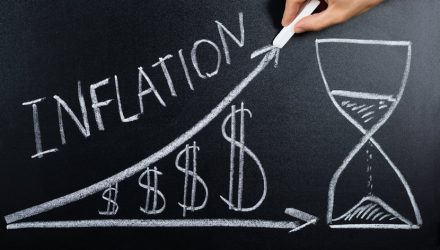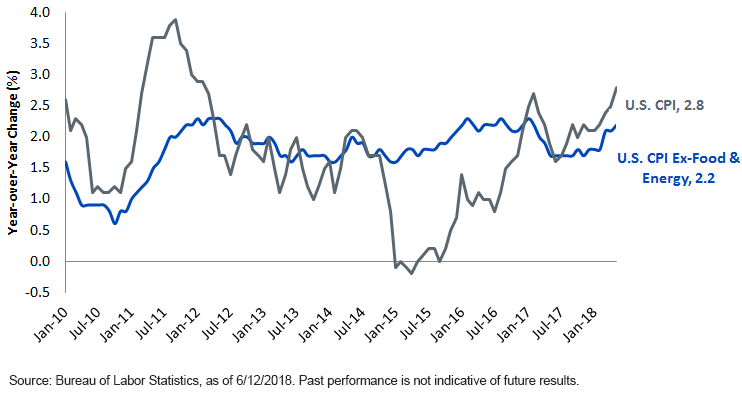![]()
Year-over-Year Change from 1/ 31/2010 to 5/31/2018
While the U.S. Treasury (UST) market may have been preoccupied with the aforementioned news events, the Federal Reserve (Fed) certainly has taken note. No, this renewed increase in inflation was not an integral factor behind the FOMC’s decision to raise rates at last week’s meeting, but based upon the policy statement and Chairman Powell’s post-convocation presser, the Fed appears to be rather pleased with the direction inflation is finally headed. In fact, Powell stated that recent inflation data has been encouraging, but on the other hand warned that “we don’t want to declare victory” yet. For the record, the Fed’s preferred inflation measure, the personal consumption expenditure (PCE) price index, has also made some progress. The overall PCE gauge has hit the FOMC’s inflation target of +2.0% the last two months, while the core measure resides just below, at +1.8%, but it, too, appears poised to make a run at this goal.
Conclusion
Let’s conclude with the UST market. The UST 10-Year yield has, thus far, really not shown any visible concern on where inflation has been headed of late. One could make the case that the market has already discounted the current trend. In fact, the break-even inflation rate, or the difference between the yield on a nominal bond (such as the U.S. Treasury 10-Year note) and an inflation-linked or real yield bond with the same maturity (such as the 10-Year U.S. Treasury Inflation-Protected Securities or TIPS), has been mired in the same range-bound pattern since January. In my opinion, the potential difference maker that could grab the Treasury market’s attention would be if there was a “breakout to the upside” on the wage front in the months ahead.
For more investment solutions, visit the Advisor Solutions Channel.

